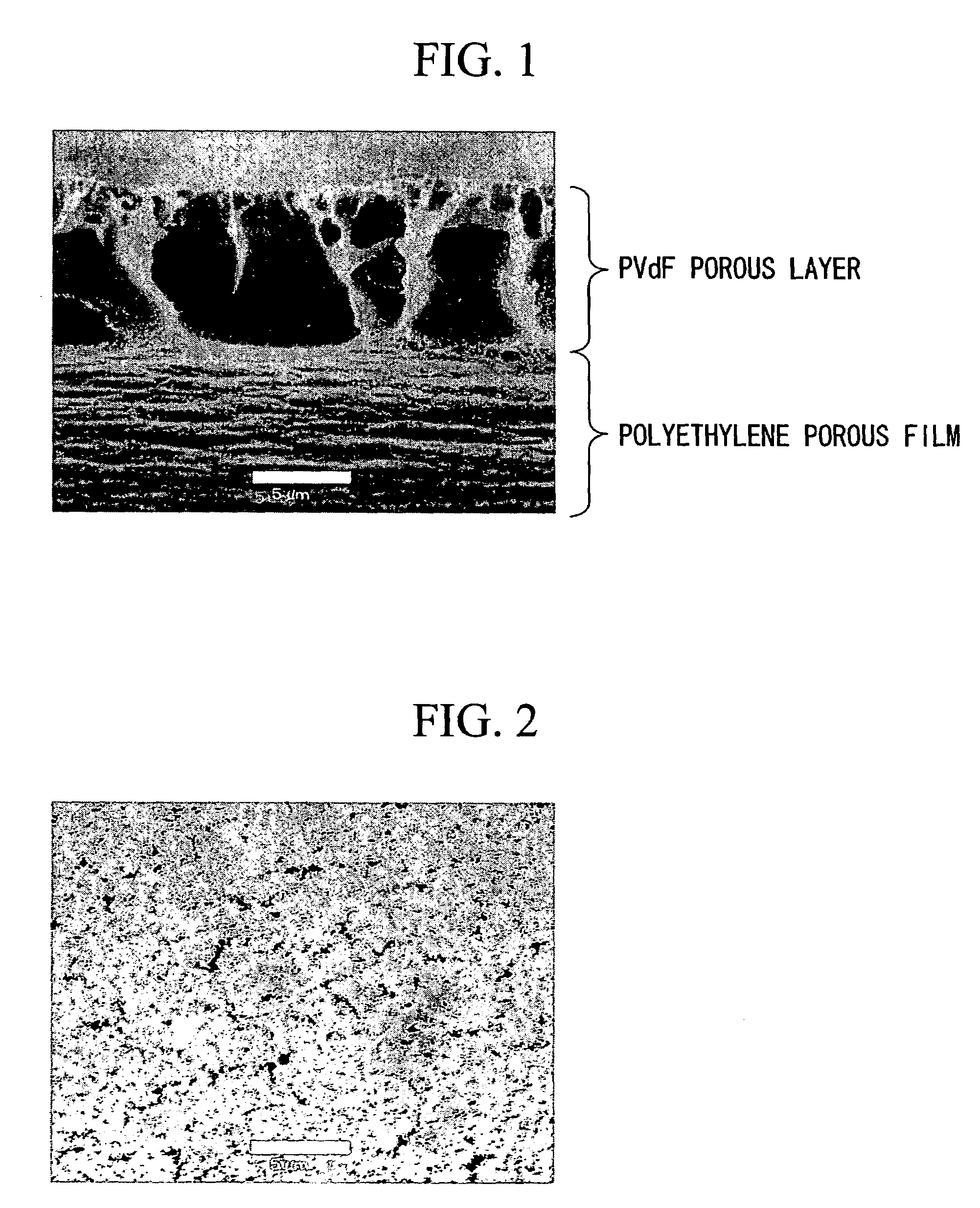Separator for lithium ion secondary battery and lithium ion secondary battery provided therewith
a lithium ion secondary battery and separation device technology, applied in the direction of cell components, cell component details, electrochemical generators, etc., can solve the problems of affecting the use of automobiles, affecting the performance of the battery, and the leakage of electrolytic solution, etc., to achieve excellent electrolytic solution retention properties, reduce interfacial resistance to electrodes, and high and uniform ionic conductivity
- Summary
- Abstract
- Description
- Claims
- Application Information
AI Technical Summary
Benefits of technology
Problems solved by technology
Method used
Image
Examples
examples
[0081]The following Examples further illustrate the present invention in detail.
examples 1 to 6
[0082]As the vinylidene fluoride resin, a homopolymer of vinylidene fluoride having a weight-average molecular weight (hereinafter abbreviated to Mw) of about 130,000, a homopolymer of vinylidene fluoride having an Mw of about 300,000, a homopolymer of vinylidene fluoride having Mw of about 400,000, and a copolymer (monomer ratio of HFP: about 12% by weight, Mw: about 270,000) of propylene hexafluoride (hereinafter abbreviated to HFP) and vinylidene fluoride were used. Such a vinylidene fluoride resin was added to 1-methyl-2-pyrrolidone (hereinafter abbreviated to NMP) in the amounts described in Table 1, and then dissolved at room temperature in a nitrogen atmosphere. After cooling to room temperature, a coating solution of the mixture was obtained. After casting the resulting coating solution on one surface of a polyethylene drawn porous film (porous base material) having a thickness of about 25 μm and air permeability of about 100 sec / 100 ml by a doctor blade method, the coated p...
reference examples 1 to 3
[0084]As the vinylidene fluoride resin, a homopolymer of vinylidene fluoride having an Mw of about 130,000, a homopolymer of vinylidene fluoride having an Mw of about 300,000, and a copolymer (monomer ratio of HFP: about 15% by weight, Mw: about 100,000) of HFP and vinylidene fluoride were used. According to the formulation shown in Table 1, separators for lithium ion secondary battery, comprising a polyethylene drawn porous film and a porous layer containing a vinylidene fluoride resin provided on both surfaces of the polyethylene drawn porous film were obtained in the same manner as in Examples 2 to 6.
PUM
| Property | Measurement | Unit |
|---|---|---|
| pore size | aaaaa | aaaaa |
| pore size | aaaaa | aaaaa |
| thickness | aaaaa | aaaaa |
Abstract
Description
Claims
Application Information
 Login to View More
Login to View More - R&D
- Intellectual Property
- Life Sciences
- Materials
- Tech Scout
- Unparalleled Data Quality
- Higher Quality Content
- 60% Fewer Hallucinations
Browse by: Latest US Patents, China's latest patents, Technical Efficacy Thesaurus, Application Domain, Technology Topic, Popular Technical Reports.
© 2025 PatSnap. All rights reserved.Legal|Privacy policy|Modern Slavery Act Transparency Statement|Sitemap|About US| Contact US: help@patsnap.com


